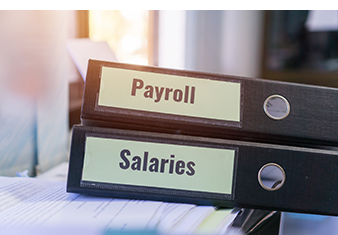If you or your business received funds from the Paycheck Protection Program (PPP), the recently passed Emergency Coronavirus Relief Act of 2020 will help to dramatically cut your tax bill. Here’s what you need to know.
Background
 The PPP program was created by the CARES Act in March 2020 to help businesses which were adversely affected by the COVID-19 pandemic. Qualified businesses could apply for and receive loans of up to $10 million. Loan proceeds could be used to pay for certain expenses incurred by a business, including salaries and wages, other employee benefits, rent and utilities.
The PPP program was created by the CARES Act in March 2020 to help businesses which were adversely affected by the COVID-19 pandemic. Qualified businesses could apply for and receive loans of up to $10 million. Loan proceeds could be used to pay for certain expenses incurred by a business, including salaries and wages, other employee benefits, rent and utilities.
If the business used at least 60% of loan proceeds towards payroll expenses, the entire amount of the loan would be forgiven.
The Dilemma
While the CARES Act spelled out that a business’s forgiven PPP loan would not be considered taxable income, the legislation was silent about how to treat expenses paid for using PPP loan proceeds if the loan was ultimately forgiven.
Congress intended for these expenses to be deductible for federal tax purposes. But since the legislation was silent on this issue, the IRS swooped in and deemed these expenses to be nondeductible.
There was considerable debate over the latter half of 2020, with Congressional politicians explaining that their intent was that the expenses be deductible and the IRS responding “Too bad, they’re nondeductible.”
The Solution
Congress overruled the IRS’s position in the Emergency Coronavirus Relief Act of 2020. The legislation officially makes deductible for federal tax purposes all expenses paid for using proceeds from a forgiven PPP loan.
Stay tuned for updates as to how this new legislation affects your business.
Do you need a quick infusion of cash?
 Under the Coronavirus Aid, Relief, and Economic Security (CARES) Act, you may be able to take money out of a qualified plan, like a 401(k), or an IRA, with favorable tax consequences. But should you do it? You might view withdrawing money from a retirement account as a last resort.
Under the Coronavirus Aid, Relief, and Economic Security (CARES) Act, you may be able to take money out of a qualified plan, like a 401(k), or an IRA, with favorable tax consequences. But should you do it? You might view withdrawing money from a retirement account as a last resort.
Background
Among other changes in the CARES Act relating to qualified plans and IRAs, a participant can withdraw up to $100,000 of funds without paying the usual 10% tax penalty on distributions before age 59½. Plus, you can take as long as three years to pay the resulting tax bill, spread out evenly over the three years. If you repay the full amount within three years, you owe no tax.
To qualify for this program, you or your spouse must be diagnosed with COVID-19 or experience adverse financial consequences due to the virus such as being laid off, having work hours reduced or being quarantined or furloughed.
What are the pitfalls?
There are several reasons why you may want to avoid taking money out of your retirement accounts unless it’s an absolute emergency:
You’re diluting your retirement savings. Although the money comes in handy now, you’re chipping away at your nest egg and forfeiting growth. For example, if you withdraw the maximum amount of $100,000 that would have earned 6% annually tax-deferred for ten years, the value would have been $179,000.
It may be bad timing. Experts say it is difficult to time the markets in the current volatile environment. If you sell some holdings right now, you may be locking in losses that would miss the recovery in the next few months or years.
You still owe income tax. Income tax is due unless you replace the full amount within three years. Also, depending on your situation, you could end up paying tax at higher rates than you would in your retirement years.
Better options might exist. Arranging a hardship loan from your 401(k) might be a better alternative for your situation. You avoid the taxable event of the withdrawal and you pay back yourself with interest. Other options include refinancing a mortgage with lower interest rates, taking advantage of payment relief from mortgage, rent or student loan payments or deferred credit card billing.
While it is an option, retirement plan withdrawals are not always the best choice. Think through all scenarios before withdrawing from retirement funds to cover emergency expenses.